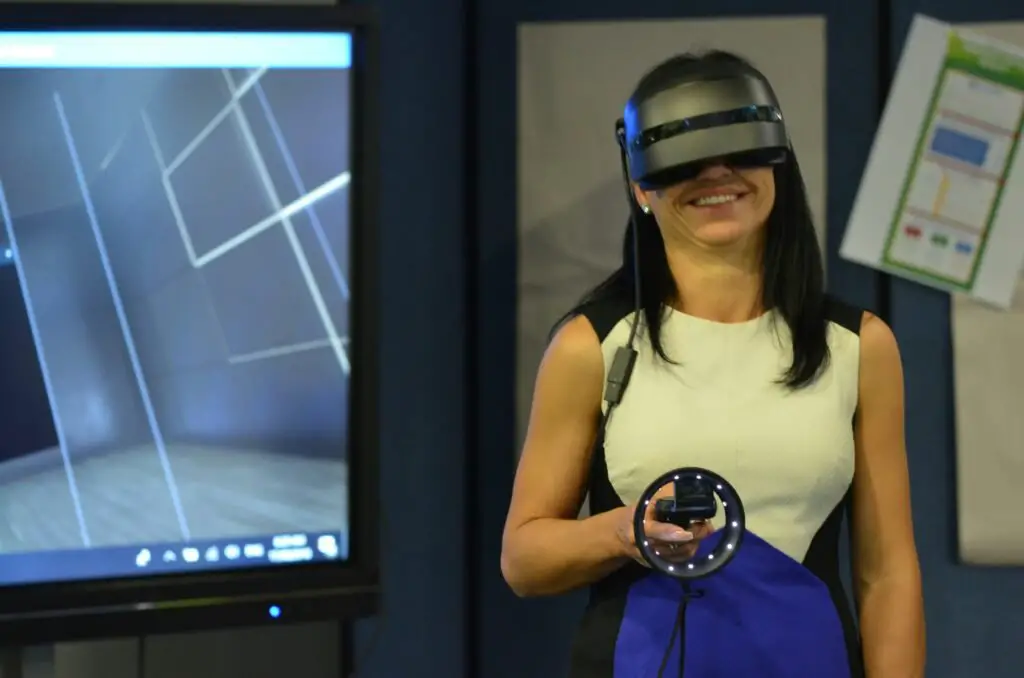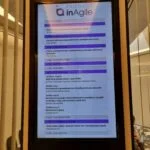The Setup
Preparing for a virtual reality date involves several steps that intersect technology, creativity, and personal expression. My choice of app for this experience was based on its reputation for robust features and user-friendly interface. After researching various platforms, I settled on one that offered immersive environments, interactive elements, and a community eager to engage in virtual dating.
Once the app was downloaded, the first task was to create personalized avatars that would represent my date and myself in the metaverse. This process was surprisingly detailed, offering a plethora of customization options. From adjusting facial features, selecting hairstyles, and curating outfits, every aspect of the avatar creation allowed for a representation that felt authentic. These avatars not only functioned as digital stand-ins but also served to express our personalities. The availability of accessories, including wearable items and mood indicators, added depth to our representation and set the tone for our virtual interactions.
The next step was selecting the perfect venue for our date, a crucial element in creating an enjoyable atmosphere within the metaverse. Various virtual spaces were available, ranging from scenic parks and cozy cafes to futuristic cityscapes and fantasy realms. Each location offered unique features, such as interactive activities and aesthetic backgrounds, which added to the overall experience. As I navigated the booking options, I considered factors like ambiance, accessibility, and potential interactive elements that might facilitate conversation and engagement. The intricacies of choosing a virtual venue highlighted the importance of setting in shaping our date’s experience and influenced the excitement leading up to our meeting.
The Date Begins
As I entered the virtual environment designated for my date, a rush of excitement washed over me. The vibrant digital landscape was a far cry from the usual coffee shop ambiance of a traditional date. Instead of the aroma of brewed coffee and the sounds of clinking cups, I found myself amidst a vivid and interactive world, where creativity knew no bounds. My date and I initiated a voice chat, which seemed to bridge the gap between the digital avatars we controlled and the reality of our personal interactions. The smoothness of the audio made our conversation feel almost lifelike, yet there were moments when the richness of tone and inflection was lost in translation, which served as a subtle reminder of the artificiality of our surroundings.
Body language, a crucial aspect of human communication, took on new forms in this environment. While our avatars could mimic gestures and movements, nothing could quite replace the nuanced expressions found in the real world. The occasional glitches—an avatar’s sudden disconnection or an unintended pause—offered a comical take on our virtual experience, yet they also challenged the fluidity of our interaction. Such moments prompted reflection on how romance is constructed in these immersive spaces. While traditional dating thrives on physical proximity, the metaverse redefines connection through shared experiences rather than physical touch.
What constitutes romance in a virtual reality context can be multifaceted and complex. The playful avatars, vibrant settings, and innovative interactions provide an exhilarating backdrop, yet they also evoke a sense of curiosity about genuine emotional connection. Amidst the novelty of VR dating, the question lingered: can one forge a deep romantic bond when physical presence is reduced to mere pixels? Through this exploration, it became evident that while virtual reality opens new doors for dating, the essence of human connection—vulnerability, chemistry, and authenticity—remained paramount, albeit expressed differently.
When Things Got Awkward
As I ventured into the realm of virtual reality dating, my expectations were a mixture of excitement and nervousness. However, nothing could have prepared me for the unexpected technical failures and malfunctions that accompanied my date in the metaverse. The first signs of impending awkwardness emerged when my avatar lagged behind, making it appear as though I was in a slow-motion sprint while my date maintained an impeccable virtual presence. This discrepancy between our speeds created an unintentional comedic effect, reminiscent of a clumsy chase scene in a comedy film.
Moreover, the platform’s glitches escalated the situation when sound effects malfunctioned. Instead of the intended calming background music, I was greeted with abrupt sound bites that included nonsensical laughs and other off-putting audio distortions. My date’s bewildered expression mirrored my own, as our attempts to engage in light conversation were abruptly interrupted by the unexpected auditory mishaps. This experience vividly illustrated how technology, while innovative, can create a jarring barrier to authentic interaction.
Another humorous yet perplexing moment arose when my avatar unexpectedly performed an assortment of bizarre animations. During a casual exchange, my avatar spontaneously gestured in what could only be described as interpretive dance. Despite the awkwardness, we both laughed it off, which led to a shared moment of connection in the face of technological absurdity. However, amid the laughter, I could sense the discomfort arising from the lack of control over my avatar’s behavior, highlighting the challenges of navigating interpersonal interactions in this digital world.
Each of these misadventures pointed to a deeper truth about dating in the metaverse: the intricate dance between technology and genuine connection can yield unpredictable outcomes, oscillating between comedy and unsettling awkwardness. Such moments serve as stark reminders of the unforeseen challenges that accompany the cutting-edge experience of virtual reality dating.
Technical Fails
During the recent virtual reality (VR) date in the metaverse, numerous technical challenges arose, significantly impacting the overall experience. One of the most prominent issues was the lagging of avatars. As we attempted to engage in conversation, my date’s avatar frequently stuttered and froze, causing moments of awkward silence and confusion. This hindered the natural flow of discussions as responses appeared disjointed and delayed. The lag made it difficult to gauge non-verbal cues, which are essential components of effective communication. The resulting disconnect left both of us feeling as though we were communicating in a fragmented manner, ultimately detracting from the dating experience.
Moreover, there were instances of lost connections. At one point, I was abruptly booted from the environment, causing panic as I tried to reconnect. This interruption not only disrupted the romantic ambiance we had managed to create but also introduced an element of frustration and anxiety. The unpredictability of such technical fails can overshadow the potential enjoyment and excitement of VR dating. In conversations with others who have ventured into metaverse dating, it’s evident that similar experiences with disconnections are quite common, suggesting that these issues are pervasive in the virtual dating landscape.
Glitches further compounded our challenges. On several occasions, objects appeared distorted or out of place, causing confusion during our interactions. For example, when attempting to share virtual items, the system lagged, and the item either vanished or appeared in a non-intuitive manner. These unpredictable glitches now seem almost inherent to the VR experience, presenting obstacles that take away from dialogue and connection.
Ultimately, the technical difficulties encountered during this date highlight a crucial aspect of virtual reality dating—while it holds exciting possibilities, it is not without its setbacks. As the technology evolves, addressing these issues will be vital for enhancing future experiences in the metaverse.
Creepy or Hilarious Moments
As I embarked on my virtual date in the metaverse, I quickly discovered that navigating the digital landscape could lead to both humorous antics and unsettling experiences. One of the first instances that struck me as hilariously awkward was when I attempted to gesture while engaged in conversation. My avatar, programmed to replicate my movements, expressed a discrepancy between my real-life enthusiasm and the clunky movements on-screen. This led to my date chuckling uncontrollably as I struggled to maintain normalcy while waving my arms about, inadvertently conjuring images of a lost robot.
However, the lightheartedness of the initial embarrassment quickly morphed into a more unsettling experience. At one point, a glitch in the virtual reality software transformed my date’s avatar into a strange amalgamation of familiar characters, causing an immediate bout of confusion. It felt as though we were trapped in a bizarre cartoon, with my date’s avatar resembling a hybrid of a cartoon cat and a famous pop star. Laughter mingled with discomfort as the bizarre sight made it difficult to gauge their reactions. It was a moment that encapsulated the unpredictability of virtual reality dating.
As the evening progressed, I found myself amused yet unnerved by a sudden influx of unsolicited avatars entering our shared virtual space. These uninvited guests, adorned with exaggerated features and over-the-top costumes, began to perform strange dance moves around us. Their cartoonish antics transformed our date into an unintended spectacle, leaving both of us laughing, albeit reluctantly. It brought to light the oddity of online interactions and how quickly something can go from romantic to ridiculous in a digital setting.
Ultimately, these unforgettable moments illustrated the duality of dating in the metaverse. While the unexpected can be amusing, it can also veer into discomfort, reminding us of the unique nature of relationships formed in immersive digital environments.
Is This the Future of Love?
As technology continues to advance, the landscapes of romantic relationships are being reshaped by innovations like virtual reality (VR) dating. The integration of VR within the realm of dating presents both opportunities and challenges that merit exploration. One of the notable advantages of VR dating is its ability to facilitate connections among individuals who may otherwise be unable to date due to geographical limitations or physical barriers. By creating digital avatars, users can engage in romantic interactions without the constraints of distance, potentially leading to a broader pool of prospective partners.
Moreover, VR dating offers creative possibilities that traditional dating methods may not provide. Users can design their environments—from serene beachfronts to bustling city streets—enhancing the shared experience between individuals. This customization allows for a unique and personalized approach to dating, which can be especially appealing to younger generations. For them, the allure of immersive experiences might outweigh the conventional means of establishing relationships.
However, the proliferation of virtual interactions raises essential societal questions. As more individuals gravitate towards virtual relationships, there is a risk of diminishing face-to-face social skills, which are pivotal in forming meaningful connections. Additionally, the emotional depth of relationships formed in virtual spaces could be called into question, as the distinction between genuine connection and mere escapism becomes blurred. This factor may lead to differing perspectives on love and companionship in the younger demographic.
In contemplating the future of love, the role of VR dating is undoubtedly significant. While it offers unparalleled accessibility and creativity in forging relationships, it also presents challenges that society must navigate. The discussion surrounding this evolving concept will likely intensify, as people continue to explore how these virtual interactions shape their understanding and experience of romantic love.
Pros and Cons of VR Dating
Virtual reality (VR) dating has gained popularity, offering a novel approach to romantic interactions. One of the significant advantages of VR dating is the anonymity it provides. Participants can create avatars that represent them, allowing individuals to engage in dating without disclosing personal information initially. This can make the experience less intimidating, particularly for those who are shy or anxious about traditional dating scenarios.
Another benefit is the creativity in self-presentation. Users can customize their avatars, creating a persona that may reflect aspects of their personality that they wish to share with potential partners. This level of customization can be exciting and allows individuals to express themselves uniquely. Moreover, VR creates opportunities for immersive and imaginative date experiences, from exploring fantastical worlds to attending virtual events together. These unique date scenarios can foster memorable moments that nourish relationships in ways that typical in-person dates may not allow.
Despite these advantages, there are inherent disadvantages to consider in virtual dating. A primary concern is the potential for misrepresentation; users may depict themselves differently through avatars, leading to unrealistic expectations when transitioning to physical meetings. This discrepancy can result in feelings of betrayal and confusion if individuals do not disclose accurate details about themselves.
Additionally, the lack of a physical connection can be a barrier for many. While the virtual space provides engaging interaction, it cannot replicate the feelings and sensations associated with physical presence. This absence may lead to challenges in developing a deeper emotional bond. Finally, users may encounter technical challenges, such as compatibility issues, glitches, or connectivity problems that can disrupt the flow of a date. As VR dating evolves, individuals must weigh these pros and cons to determine if this modern approach to romance aligns with their relationship goals.
Personal Reflections
Engaging in virtual reality dating was an experience that pushed the boundaries of my understanding of relationships. As someone who had primarily navigated traditional dating avenues, stepping into the metaverse was akin to entering a new realm—one filled with both excitement and apprehension. Initially, I was enthralled by the vivid, immersive environment where the possibilities seemed limitless. However, as the date progressed, I found myself grappling with the dissonance between the virtual interactions and the reality I was accustomed to.
My partner and I, despite being avatars in a digital landscape, attempted to foster a meaningful connection. I discovered that while VR allowed for creative expression—being able to customize our visual representations and explore elaborate virtual settings—the emotional depth of our interaction was a fluctuating variable. The initial thrill was palpable, yet as we settled into conversation, I couldn’t shake the feeling that our exchange was somewhat superficial, reliant on avatars and programmed gestures rather than genuine human connection.
This experience forced me to reflect on my dating preferences and what I genuinely seek in relationships. Traditional dating offers a tactile dimension—a shared cup of coffee, the warmth of a genuine smile, or even the comfort of silence between two people. In contrast, dating within the metaverse felt at times like role-playing devoid of authenticity. I learned that while the leap into virtual settings might be exciting, the core principles of communication and emotional vulnerability still reign supreme.
Ultimately, my venture into virtual reality dating enriched my understanding of myself and what I desire in a partner. It illuminated the extent to which shared experiences, genuine connections, and physical interactions shape our romantic encounters. While the metaverse can offer new horizons for dating, this adventure served as a poignant reminder of the irreplaceable depth found in traditional relationships.
Final Thoughts
As my virtual reality (VR) dating experience in the metaverse came to an end, I found myself reflecting on the intricate dynamics of love and connection in a digital landscape. The experience, while fascinating and immersive, highlighted both the potential and the peculiar pitfalls that can accompany relationships cultivated in virtual environments. Engaging with another person in a VR setting provided a unique sense of presence; the ability to interact and share experiences, albeit avatar-to-avatar, offered an exhilarating departure from conventional dating norms.
However, beneath the surface allure of these metaverse encounters lies a series of complexities. Interpersonal communication relies heavily on non-verbal cues, and in the virtual realm, these cues can often be distorted or misinterpreted. While gestures, expressions, and even environmental settings contribute significantly to the dating experience, they do not always translate effectively between avatars. This raises questions about authenticity and whether true emotional connections can be formed in such an artificial space.
<pfurthermore, a="" all="" also="" and="" anonymity="" are="" as="" aspects="" but="" can="" complicate="" could="" curate="" dating,="" development="" embracing="" entails.
Ultimately, my excursion into virtual reality dating encourages us to ponder significant questions: Can love truly thrive in the metaverse, or are human connections best maintained in the tangible world? For those intrigued by this digital frontier, the potential to explore such relationships presents an intriguing opportunity, yet it remains essential to weigh the implications carefully. Would you be willing to venture into this uncharted territory of virtual romance?

It could cover a range of topics related to health, wellness, beauty, personal growth, and social issues, all from the perspective of striving for beauty, intelligence, youthfulness, and impartiality





